Wuhan
| Wuhan 武汉 |
|
|---|---|
| — Sub-provincial city — | |
| 武汉市 | |
 |
|
 |
|
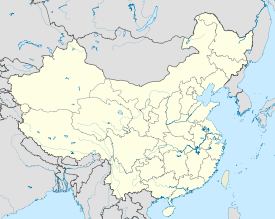 Wuhan
|
|
| Coordinates: | |
| Country | China |
| Province | Hubei |
| County-level divisions | 13 |
| Township divisions | 153 |
| Settled | 223 BC |
| Government | |
| - CPC Wuhan | Yang Song (杨松) |
| - Mayor | Ruan Chengfa (阮成发) |
| Area | |
| - Sub-provincial city | 8,467.11 km2 (3,269.2 sq mi) |
| - Urban | 1,557 km2 (601.2 sq mi) |
| Population (2007 August) | |
| - Sub-provincial city | 9,700,000 |
| - Density | 1,145.6/km2 (2,967.1/sq mi) |
| - Urban | 6,660,000 |
| - Urban density | 4,277.5/km2 (11,078.6/sq mi) |
| - Rank in China | 8th |
| - Major nationalities | Han - 99% Minorities - 1% |
| Time zone | China Standard Time (UTC+8) |
| Postal code | 430000 - 430400 |
| Area code(s) | +86/27 |
| License plate prefixes | 鄂A 鄂O (police and authorities) |
| ISO 3166-2 | cn-?? |
| GDP (2008) | CNY 396 billion (13th)[1] |
| GDP per capita | CNY 44,148 (43rd)[1] |
| Website | http://www.wuhan.gov.cn |
Wuhan (simplified Chinese: 武汉; traditional Chinese: 武漢; pinyin: Wǔhàn; Mandarin pronunciation: [wu˧˩xan˥˩] [Listen]) is the capital of Hubei province, People's Republic of China, and is the most populous city in central China. It lies at the east of Jianghan Plain, and the intersection of the middle reaches of the Yangtze and Han River. Arising out of the conglomeration of three boroughs, Wuchang, Hankou, and Hanyang, Wuhan is known as "the nine provinces' leading thoroughfare"; it is a major transportation hub, with dozens of railways, roads and expressways passing through the city. The city of Wuhan, first termed as such in 1927, has a population of approximately 9,100,000 people (2006), with about 6,100,000 residents in its urban area. In the 1920s, Wuhan was the capital of a leftist Kuomintang (KMT) government led by Wang Jingwei in opposition to Chiang Kai-shek, now Wuhan is recognized as the political, economic, financial, cultural, educational and transportation center of central China.
History
The area was first settled more than 3,000 years ago. During the Han Dynasty, Hanyang became a fairly busy port. In the 3rd century AD one of the most famous battles in Chinese history and a central event in the Romance of the Three Kingdoms—the Battle of Red Cliffs—took place in the vicinity of the cliffs near Wuhan. Around that time, walls were built to protect Hanyang (AD 206) and Wuchang (AD 223). The latter event marks the foundation of Wuhan. In AD 223, the Yellow Crane Tower (黄鹤楼) was constructed on the Wuchang side of the Yangtze River. Cui Hao, a celebrated poet of Tang Dynasty, visited the building in the early 8th century; his poem made the building the most celebrated building in southern China. The city has long been renowned as a center for the arts (especially poetry) and for intellectual studies. Under the Mongol rulers (Yuan Dynasty), Wuchang was promoted to the status of provincial capital. By approximately 300 years ago, Hankou had become one of the country's top four trading towns.

In the late 1800s railroads were extended on a north-south axis through this city, which then became an important transshipment point between rail and river traffic. At this time foreign powers extracted mercantile concessions, with the riverfront of Hankou being divided up into various foreign controlled merchant districts. These districts contained trading firm offices, warehouses, and docking facilities.
In 1911, Sun Yat-sen's followers launched the Wuchang Uprising that led to the collapse of the Qing Dynasty and the establishment of the Republic of China. Wuhan was the capital of a leftist Kuomintang government led by Wang Jingwei, in opposition to Chiang Kai-shek during the 1920s.
In 1938, Wuhan and the surrounding region became the battlefield of the Battle of Wuhan, a major conflict in the Second Sino-Japanese War. After being taken by the Japanese in 1938, Wuhan became a major Japanese logistics center for operations in southern China. In December 1944, the city was largely destroyed by U.S. firebombing raids conducted by the Fourteenth Air Force. In 1967, civil strife struck the city in the Wuhan Incident as a result of tensions arising out of by the Cultural Revolution.
The city has been subject to numerous devastating floods, which are supposed to be controlled by the ambitious Three Gorges Dam. That project is set to be completed in 2011.
History
Opening Hankou as a Trading Port
During the Second Opium War (known in the West as the Arrow War, 1856–1860), the Government of Qing Dynasty was defeated by the western powers and signed the Treaties of Tianjin and the Convention of Peking, which stipulated eleven cities or regions (including Hankou) as trading ports. In December 1858, James Bruce, 8th Earl of Elgin, High Commissioner to China, led four warships up the Yangtze River in Wuhan to collect the information needed for opening the trading port in Wuhan. And in the spring of 1861, Counselor Harry Parkes and Admiral Herbert were sent to Wuhan to open a trading port. On the basis of the Convention of Peking, Harry Parkes concluded the Hankou Lend-Lease Treaty with Guan Wen, the governor-general of Hunan and Hubei. It brought an area of 30.53 square kilometers along the Yangtze River (from Jianghan Road to Hezuo Road today) to become a British Concession and permitted Britain to set up their consulate in the British Concession. Thus, Hankou became an open trading port.
Hubei under Zhang Zhidong
In the fifteenth year of Guangxu Period (1889) of the Qing Dynasty, Zhang Zhidong was transferred from Guangdong to be the governor-general of Hunan and Hubei. By 1906, he had governed Hubei for 17 years. During this period, he elucidated the theory of “Chinese learning as the basis, Western learning for application,” known as the ti-yong ideal. He set up many heavy industries, founded Hanyang Steel Plant, Daye Iron Mine, Pingxiang Coal Mine and Hubei Arsenal and set up local textile industries, boosting the flourishing modern industry in Wuhan. Meanwhile, he initiated educational reform, opened dozens of modern educational organizations successively, such as Lianghu (Hunan and Hubei) Academy of Classical Learning, Civil General Institute, Military General Institute, Foreign Languages Institute and Lianghu (Hunan and Hubei) General Normal School, and selected a great many students for study overseas, which well promoted the development of China’s modern education. Furthermore, he trained modern military and organized a modern army including a zhen and a xie (both zhen and xie are military units in the Qing Dynasty) in Hubei. All of these laid a solid foundation for the modernization of Wuhan.

Wuchang Uprising
On October 10 of the third year of Xuantong Period of the Qing Dynasty (1911), an armed uprising broke out in Wuchang. Before uprising, with the purpose of overthrowing the Manchu Dynasty, bourgeois revolutionaries conducted deep and wide propaganda and mobilization and founded various revolutionary organizations in Wuhan. In earlier September 1911, the Qing Government moved part of the Hubei new army to Sichuan for suppressing the people’s uprising there, which made a good chance for the uprising in Wuhan. On September 14 Literature Society and gongjinhui, the two greatest revolutionary organizations in Hubei, jointly founded the uprising headquarters in Wuchang and decided to rise up. On the morning of October 9 the bomb at the office of the political arrangement exploded accidentally and unfortunately, and the uprising proclamation, beadroll and official seal fell into the hands of Rui Cheng, the governor-general of Hunan and Hubei, who demolished the uprising headquarters in Wuchang the same day, and decided to raid the revolutionaries according to the beadroll. At this critical moment, the conductors from the basal backbones of revolutionary organizations contacted each other secretly and made a decision of immediate uprising. On the night of 10th, the revolutionaries fired to rise in revolt at the engineering barracks of new army, and then led on the new army of all barracks to rise up successively. Under the guidance of Wu Zhaolin, Cai Jimin, etc., the revolutionary army seized the official residence of the governor and government offices including fan, nie, etc. in Hubei. Rui Cheng fled in panic into the Chu-Yu Ship anchored by the river, and Zhang Biao, the controller of Qing army, also discarded the city and fled away. On the morning of 11th, the revolutionary army took the whole city of Wuchang. But the leaders such as Jiang Yiwu, Sun Wu disappeared then, thus the acephalous revolutionary army recommended Li Yuanhong, the assistant governor of Qing army, as the commander-in-chief, founded Hubei Military Government, proclaimed the abolishment of the Qing Dynasty’s imperialism and the founding of Republic of China, as well as published an open telegram for call to uprising of every province. As the beginning of the Revolution of 1911 (led by Dr. Sun Yat-sen, which overthrew the Qing Dynasty), Wuchang Uprising played a most important role in raising upsurge of the democratic revolution, which also was called “the lead in launching the Revolution of 1911” since 1911 was the year of xinhai in traditional Chinese chronology.
National government moved its capital to Wuhan
In 1926, with the north extension of Northern Expedition, the center of Great Revolution shifted from the Pearl River basin to the Yangtze River basin. On November 26, the KMT Central Political Committee decided to move the capital to Wuhan. In middle December, most of the KMT central executive commissioners and National Government commissioners arrived in Wuhan, set up the temporary joint conference of central executive commissioners and National Government commissioners, performed the top functions of central party headquarters and National Government, and declared they would work in Wuhan on January 1, 1927 and decided to combined the three towns of Wuchang, Hankou, and Hanyang into Wuhan City, called “Capital District”. The National Government was located in the Nanyang Building in Hankou, while the central party headquarters and other organizations chose their locations in Hankou or Wuchang.
Battle of Wuhan
In early October in 1938, Japanese aggressors moved east and north respectively upon outskirts of Wuhan. As a result, numerous companies and enterprises and large amounts people had to withdraw from Wuhan to the west of Hubei and Sichuan. The KMT navy undertook the responsibility of defending the Yangtze River on patrol and covering the withdrawal. On 24 October, when overseeing the waters of the Yangtze River near the town of Jinkou (Jiangxia District in Wuhan) in Wuchang, the KMT warship Zhongshan come up against six Japanese planes. The planes took turns to dive, strafe and bomb the ship. Though two planes were eventually shot down, the Zhongshan warship sank down due to serious damage with 25 casualties.
Completion and opening-to-traffic of the first Yangtze River bridge
The project of building the first Yangtze River Bridge was regarded as one of the key projects during the period of the first five-year plan. The Engineering Bureau of the First Yangtze River Bridge, set up by the Ministry of Railway in April 1953, was responsible for the design and construction of the bridge. The document “Resolutions on Building the First Yangtze River Bridge” was passed in the 203rd conference of State Council on 15 January 1954. The technical conference on the routes of the bridge, was held in Hankou on 15 January 1955, determined that the route from Tortoise Hill to Snake Hill was the best choice. On 25 October, the bridge proper was under construction. The same day in 1957 the whole project was completed and an opening-to-traffic ceremony was held on 15 October. The whole bridge was 1,670 m (5,479.00 ft) long, of which the superstratum was a highway with a width of 22.5 m (73.82 ft) and the substratum was a double-line railway with a width of 18 m (59.06 ft). The bridge proper was 1,156 m (3,792.65 ft) long with two pairs of eight piers and nine arches with a space of 128 m (419.95 ft) between each arch. Thanks to the First Yangtze River Bridge, Beijing-Wuhan and Guangdong-Wuhan railways were available and any place could be reached from Wuchang, Hankou to Hanyang. Thus Wuhan was a thoroughfare to nine provinces not only in reality but in name as well.
Geography and climate
| Wuhan | ||||||||||||||||||||||||||||||||||||||||||||||||||||||||||||
|---|---|---|---|---|---|---|---|---|---|---|---|---|---|---|---|---|---|---|---|---|---|---|---|---|---|---|---|---|---|---|---|---|---|---|---|---|---|---|---|---|---|---|---|---|---|---|---|---|---|---|---|---|---|---|---|---|---|---|---|---|
| Climate chart () | ||||||||||||||||||||||||||||||||||||||||||||||||||||||||||||
|
||||||||||||||||||||||||||||||||||||||||||||||||||||||||||||
|
||||||||||||||||||||||||||||||||||||||||||||||||||||||||||||

Wuhan is situated in the middle of Hubei Province, 113°41′-115°05′ East, 29°58′-31°22′ North, east of the Jianghan Plain, and the confluence of the middle reaches of the Yangtze River and Hanshui River.
The metropolitan area comprises three parts - Wuchang, Hankou, and Hanyang, commonly called the "Three Towns of Wuhan" (hence the name "Wuhan", combining "Wu" from the first city and "Han" from the other two). The consolidation of these three cities occurred in 1927 and Wuhan was thereby established. These three parts face each other across the rivers and are linked by bridges, including one of the first modern bridges in China, known as the "First Bridge". It is simple in geographical structure - low and flat in the middle and hilly in the south, with the Yangtze and Han rivers winding through the city. Wuhan occupies a land area of 8494.41 km2, most of which is plain and decorated with hills and a great number of lakes and pools.
Wuhan's climate is humid subtropical (Koppen Cfa) with abundant rainfall and four distinctive seasons. Wuhan is known for its oppressively humid summers, when dewpoints can often reach 26 °C (79 °F) or more.[3] Because of its hot summer weather, Wuhan is commonly known as one of the Three Furnaces of China, along with Nanjing and Chongqing. Spring and autumn are generally mild, while winter is cool with occasional snow. In thr recent thirty years, the average annual rainfall is 1269 mm, mainly from June to August; annual temperature is 15.8℃-17.5℃, annual frost free period lasts 211 to 272 days and annual sunlight duration is 1810 to 2100 hours.
| Climate data for Wuhan (1971-2000) | |||||||||||||
|---|---|---|---|---|---|---|---|---|---|---|---|---|---|
| Month | Jan | Feb | Mar | Apr | May | Jun | Jul | Aug | Sep | Oct | Nov | Dec | Year |
| Average high °C (°F) | 8.0 (46.4) |
10.1 (50.2) |
14.4 (57.9) |
21.4 (70.5) |
26.4 (79.5) |
29.7 (85.5) |
32.6 (90.7) |
32.5 (90.5) |
27.9 (82.2) |
22.7 (72.9) |
16.5 (61.7) |
10.8 (51.4) |
21.1 (70) |
| Average low °C (°F) | 0.4 (32.7) |
2.4 (36.3) |
6.6 (43.9) |
12.9 (55.2) |
18.2 (64.8) |
22.3 (72.1) |
25.4 (77.7) |
24.9 (76.8) |
19.9 (67.8) |
13.9 (57) |
7.6 (45.7) |
2.3 (36.1) |
13.1 (55.6) |
| Precipitation mm (inches) | 43.4 (1.709) |
58.7 (2.311) |
95.0 (3.74) |
131.1 (5.161) |
164.2 (6.465) |
225.0 (8.858) |
190.3 (7.492) |
111.7 (4.398) |
79.7 (3.138) |
92.0 (3.622) |
51.8 (2.039) |
26.0 (1.024) |
1,269.0 (49.961) |
| % Humidity | 77 | 76 | 78 | 78 | 77 | 80 | 79 | 79 | 78 | 78 | 76 | 74 | 77.5 |
| Avg. precipitation days (≥ 0.1 mm) | 9.1 | 9.5 | 13.5 | 13.0 | 13.2 | 13.3 | 11.2 | 9.0 | 9.0 | 9.3 | 8.0 | 6.6 | 124.7 |
| Sunshine hours | 106.5 | 102.8 | 115.5 | 151.2 | 181.4 | 179.5 | 232.1 | 241.0 | 176.7 | 161.2 | 144.3 | 136.5 | 1,928.6 |
| Source: China Meteorological Administration [2] | |||||||||||||
Administrative divisions

The sub-provincial city of Wuhan has direct jurisdiction over 13 districts (区 qu):
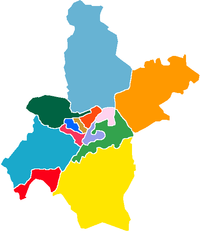 |
Subdivision | |||
|---|---|---|---|---|
| Wuhan City Proper | Wuhan Suburban and Rural | |||
| ■ Jiang'an-qu | 江岸区 | ■ Caidian-qu | 蔡甸区 | |
| ■ Jianghan-qu | 江汉区 | ■ Dongxihu-qu | 东西湖区 | |
| ■ Qiaokou-qu | 硚口区 | ■ Hannan-qu | 汉南区 | |
| ■ Hanyang-qu | 汉阳区 | ■ Jiangxia-qu | 江夏区 | |
| ■ Wuchang-qu | 武昌区 | ■ Huangpi-qu | 黄陂区 | |
| ■ Qingshan-qu | 青山区 | ■ Xinzhou-qu | 新洲区 | |
| ■ Hongshan-qu | 洪山区 | |||
Along with 3 economic development districts:
- Wuhan Economic and Technology Development District (武汉经济技术开发区)
- Donghu New Technology District (东湖新技术开发区)
- Wujiashan Taishang Investment District (吴家山台商投资区)
Transportation

Bridges
Wuhan Yangtze River Bridge, also called the First Bridge, was built over the Yangtze River (Chang Jiang) in 1957, carrying the railroad directly across the river between Snake Hill (on the left in the picture below) and Turtle Hill. Before this bridge was built it could take up to an entire day to barge railcars across. Including its approaches, it is 5,511 feet (1680 m) long, and it accommodates both a double-track railway on a lower deck and a four lane roadway above. It was built with the assistance of advisers from the Soviet Union.
The Second Bridge, a cable-stayed bridge, built of pre-stressed concrete, has a central span of 400 meters; it is 4,678 meters in length (including 1,877 meters of the main bridge) and 26.5 to 33.5 meters in width. Its main bridgeheads are 90 meters high each, pulling 392 thick slanting cables together in the shape of double fans, so that the central span of the bridge is well poised on the piers and the bridge's stability and vibration resistance are ensured. With six lanes on the deck, the bridge is designed to handle 50,000 motor vehicles passing every day. The bridge was completed in 1995.

The Third Wuhan Yangtze River Bridge was completed in September 2000. Located 8.6 kilometers southwest of the First Bridge, construction of Baishazhou Bridge started in 1997. With an investment of over 1.4 billion yuan (about 170 million U.S. dollars), the bridge, which is 3,586 meters long and 26.5 meters wide, has six lanes and has a capacity of 50,000 vehicles a day. The bridge is expected to serve as a major passage for the future Wuhan Ring Road, enormously easing the city's traffic and aiding local economic development.
The Yangluo Bridge carries Wuhan's Ring Road across the Yangtze in the city's eastern suburbs (connecting the Hongshan District with the Xinzhou District). It was opened on December 26, 2007.
The Wuhan Tianxingzhou Yangtze River Bridge crosses the Yangtze in the northeastern part of the city, downstream of the Second bridge. Its name is due to the Tianxing Island (Tianxingzhou), above which it crosses the river. Built at the cost of 11 billion yuan, the 4,657-meter cable suspension bridge was opened on December 26, 2009,[4] in time for the opening of the Wuhan Railway Station. It is a combined road and rail bridge, and carries the Wuhan–Guangzhou High-Speed Railway across the river.
Railway

Until the late 2009, the city proper in Wuhan was served by two major railway stations, namely the Hankou Railway Station in Hankou and the Wuchang Railway Station in Wuchang. As a result, the railway system in China actually did not have a unique designation for the name "Wuhan", and trains heading to Wuhan are marked with the respective borough's station name, and not the city's.
The (original) Hankou Station was the terminus for the Jinghan Railway from Beijing, while the Wuchang Station was the terminus for the Yuehan Railway to Guangzhou. But since the construction of the First Yangtze Bridge and the linking of the two lines into the Jingguang Railway, both Hankou and Wuchang stations have been served by trains going to all directions, which contrasts with the situation in such cities as New York or Moscow, where different stations serve different directions.
With the opening of the Hefei-Wuhan high-speed railway on April 1, 2009,[5] Wuhan became served by high-speed trains with Hefei, Nanjing, and Shanghai; several trains a day now connect the city with Shanghai, getting there in under 6 hours. As of the early 2010, most of these express trains leave from the Hankou Railway Station.
In 2006, construction began on the new Wuhan Railway Station with 11 platforms, located on the northeastern outskirts of the city. In December 2009, the station was opened, as China unveiled its second high-speed train with scheduled runs from Guangzhou to Wuhan. Billed as the fastest train in the world, it can reach a speed of 394 km/h (244.82 mph). The travel time between the two cities has been reduced from ten and a half hours to just three. Eventually, the rail service will extend north to Beijing.[6]
As of the early 2010, the new Wuhan Railway Station is primarily used by the Wuhan-Guangzhou high-speed trains, while most regular trains to other destinations continue to use the Hankou and Wuchang stations.
Public transit
Wuhan Metro In September 2004, Wuhan became the fifth Chinese city with a metro system (after Beijing, Tianjin, Shanghai, and Guangzhou).[7] The first 10.2 km line (10 stations) is an elevated rail (and therefore called 'light rail' in Chinese terminology). It runs from Huangpu to Zongguan in the downtown area of the Hankou District, and it is the first one in the country to use a communication-based train control system (a Moving Block signalling system, provided by Alcatel). The designed minimum interval is only 90 seconds between two trains and it features driverless operation.[7] Phase 2 of this line will extend the length to 28.8 km (17.90 mi) with 26 stations in total. It plans to start revenue service on July 28, 2010.[8]
Air
Opened in April 1995, Wuhan Tianhe International Airport is one of the busiest airports in central China and it is located 26 km north of Wuhan. It has also been selected as China's fourth international hub airport after Beijing Capital International Airport, Shanghai-Pudong and Guangzhou Baiyun. A second terminal was completed in March 2008, having been started in February 2005 with an investment of RMB3.372 billion.
Highway
- China National Highway 318
Tourist sites

- Wuchang has the largest lake within a city in China, the East Lake, as well as the South Lake.
- The Hubei Provincial Museum includes many artifacts excavated from ancient tombs, including a concert bell set (bianzhong). A dance and orchestral show is frequently performed here, using reproductions of the original instruments.
- The Rock and Bonsai Museum includes a mounted platybelodon skeleton, many unique stones, a quartz crystal the size of an automobile, and an outdoor garden with miniature trees in the penjing ("Chinese Bonsai") style.
- Jiqing Street(吉庆街) holds many roadside restaurants and street performers during the evening, and is the site of a Live Show (生活秀) with stories of events on this street by contemporary writer Chi Li.
- The Lute Platform in Hanyang was where the legendary musician Yu Boya is said to have played. According to the story of 知音 (zhi yin, "understanding music"), Yu Boya played for the last time over the grave of his friend Zhong Ziqi, then smashed his lute because the only person able to appreciate his music was dead.
- Some luxury riverboat tours begin here after a flight from Beijing or Shanghai, with several days of flatland cruising and then climbing through the Three Gorges with passage upstream past the Gezhouba and Three Gorges dams to the city of Chongqing. With the completion of the dam a number of cruises now start from the upstream side and continue west, with tourists traveling by motor coach from Wuhan.
- The Yellow Crane Tower (Huanghelou) is presumed to have been first built in approximately 220 AD. The tower has been destroyed and reconstructed numerous times, was burned last according to some sources in 1884. The tower underwent complete reconstruction in 1981. The reconstruction utilized modern materials and added an elevator, while maintaining the traditional design in the tower's outward appearance.
|
Economy
Wuhan is a sub-provincial city. Its GDP was 450 billion CNY [1] and GDP per capita was approximately 64,000 CNY[1] as of 2009. In 2008, the city's annual average disposable income was 16,360 CNY.[9] Wuhan has currently attracted about 50 French companies, representing over one third of French investment in China, and the highest level of French investment in any Chinese city.[10]
Wuhan is an important center for economy, trade, finance, transportation, information technology, and education in Central China. Its major industries includes optic-electronic, automobile manufacturing, steel manufacturing, new pharmaceutical sector, biology engineering, new materials industry and environmental protection. Wuhan Iron & Steel (Group) Co. and Dongfeng-Citroen Automobile Co., Ltd headquartered in the city. There are 35 higher educational institutions including the well-known Wuhan University, Huazhong University of Science & Technology, 3 state-level development zones and many enterprise incubators. Wuhan ranks third in China in overall strength of science and technology.[11]
Industrial zones

Major industrial zones in Wuhan include:
- Wuhan East Lake High-Tech Development Zone
Wuhan East Lake High-Tech Development Zone is a national level high-tech development zone. Optical-electronics, telecommunications, and equipment manufacturing are the core industries of Wuhan East Lake High-Tech Development Zone (ELHTZ) while software outsourcing and electronics are also encouraged. ELHTZ is China's largest production centre for optical-electronic products with key players like Changfei Fiber-optical Cables (the largest fiber-optical cable maker in China), Fenghuo Telecommunications and Wuhan Research Institute of Post and Telecommunications (the largest research institute in optical telecommunications in China). Wuhan ELHTZ also represents the development centre for China's laser industry with key players such as HUST Technologies and Chutian Laser being based in the zone.[12]
- Wuhan Economic and Technological Development Zone
Wuhan Economic and Technological Development Zone is a national level industrial zone incorporated in 1993.[13] Its current zone size is about 10-25 square km and it plans to expand to 25-50 square km. Industries encouraged in Wuhan Economic and Technological Development Zone include Auto-mobile Production/Assembly, Biotechnology/Pharmaceuticals, Chemicals Production and Processing, Food/Beverage Processing, Heavy Industry, Telecommunications Equipment.
- Wuhan Export Processing Zone
Wuhan Export Processing Zone was established in 2000. It is located in Wuhan Economic & Technology Development Zone, planned to cover land of 2.7sqkm. The first 0.7sqkm area has been launched.[14]
- Wuhan Optical Valley (Guanggu) Software Park
Wuhan Optical Valley (Guanggu) Software Park is located in Wuhan East Lake High-Tech Development Zone. Wuhan Optics Valley Software Park is jointly developed by East Lake High-Tech Development Zone and Dalian Software Park Co., Ltd.[15] The planned area is 0.67 sqkm with total floor area of 600,000 square meters. The zone is 8.5 km (5.28 mi) away from the 316 National Highway and is 46.7 km (29.02 mi) away from the Wuhan Tianhe Airport.
Colleges and universities

Wuhan is the scientific and educational center in Central China, with 35 higher educational institutions such as Wuhan University and Huazhong University of Science and Technology, which cover all the fields of science and technology and employ elites and explorers in these fields. Wuhan has formed a comprehensive scientific and educational strength ranking the 3rd in China with its main force: three national development zones and four scientific and technologic development parks as well as numerous enterprise incubators, over 350 research institutes, 1470 hi-tech enterprises, and over 400,000 experts and technicians. There are eight national colleges and universities,[16] and fourteen public colleges and universities[17] in Wuhan.
National
| Wuhan University (founded in 1893) 武汉大学 |
Huazhong University of Science and Technology (HUST,founded in 1953) 华中科技大学 |
Wuhan University of Technology(WHUT) 武汉理工大学 |
China University of Geosciences 中国地质大学 (武汉) |
| Huazhong Agricultural University (founded in 1898) 华中农业大学 |
Central China Normal University (founded in 1903) (Huazhong Normal University) 华中师范大学 |
Zhongnan University of Economics and Law (founded in 1948) 中南财经政法大学 |
South-Central University for Nationalities 中南民族大学 |
Public
| Hubei University 湖北大学 |
Wuhan University of Science and Technology 武汉科技大学 |
Jianghan University 江汉大学 |
Hubei University of Technology 湖北工业大学 |
| Wuhan Institute of Technology 武汉工程大学 |
Wuhan University of Science and Engineering 武汉科技学院 |
Wuhan Polytechnic University 武汉工业学院 |
Hubei College of Traditional Chinese Medicine 湖北中医学院 |
| Wuhan Institute of Physical Education 武汉体育学院 |
Hubei Institute of Fine Arts 湖北美术学院 |
Hubei Police College 湖北警官学院 |
Wuhan Conservatory of Music 武汉音乐学院 |
| Hubei University of Economics 湖北经济学院 |
Wuhan Bioengineering Institute 武汉生物工程学院 |
Hubei University of Education 湖北第二师范学院 |
Note: Institutions without full-time bachelor programs are not listed.
Language
Wuhan natives speak a variety of Southwestern Mandarin Chinese. Because it also has a blend of southern Chinese elements, the Wuhan variety was once promoted as the ideal basis for a Standard Chinese dialect.
Popular foods

- Hot and Dry Noodles, Re-gan mian (热干面) consists of long freshly boiled noodles mixed with sesame paste. The Chinese word re means hot and gan means dry. It is considered to be the most typical local food for breakfast.
- Duck's Neck or Ya Bozi (鸭脖子) is a local version of this popular Chinese dish, made of duck necks and spices.
- Bean Pan or Doupi (豆皮)is a popular local dish with a filling of egg, rice, beef, mushrooms and beans cooked between two large round soybean skins and cut into pieces, structurally like a stuffed pizza without enclosing edges.
- Soup dumpling or Xiaolongbao(小笼包)is a kind of dumpling with thin skin made of flour, steamed with very juicy meat inside, it is called Tang (soup) Bao (bun), because every time one takes a bite from it the soup inside spills out.
- Salty Doughnut or Mianwo (面窝) is a kind of doughnut with salty taste. It's much thinner than common doughnut, and is a typical Wuhan local food.
Notable people
- Dong Biwu was the first judge for the highest court in the People's Republic of China. He founded the school Wuhan High School in 1920.
- Modern writer Chi Li
- Tennis Players Li Na and Li Ting reside in Hankou.
- Olympic gold medal diver Fu Mingxia resided in Hankou.
- Table tennis player Qiao Hong.
- Vice Premier and Minister Of Health of China Wu Yi, is a native of Wuhan. She was ranked the 2nd Most Powerful Woman in the World by Forbes.com [18]
- Actress Xu Fan.
- Olympic Games medal winner diver Xiao Hailiang is from Wuhan.
- Chang-Lin Tien, former Chancellor of the University of California, Berkeley (1990–97)
- Professional badminton player and two time Olympic gold medalist Gao Ling was born in Wuhan
- Liu Yi Fei (Crystal Liu) who stars in the movie The Forbidden Kingdom alongside Jet Li and Jackie Chan
- Olympic Gold medalist in Gymnastics for the 2008 Beijing Games, Yang Wei
- Super Junior M member Zhou Mi (entertainer)
- Singer and Actress Tian Yuan
Soccer
In 2005, Wuhan FC won CSL (China Super League) Cup, for the first time since the Chinese professional football league was formed in 1994.
In May 2006 top Chinese soccer team Wuhan Huanghelou announced that they had formed a lucrative deal with top English team Bolton Wanderers which would see both coaching and commercial methods exchanged.
International relations
Twin towns — Sister cities
Wuhan is twinned with:

 Adelaide, Australia, since July 2007
Adelaide, Australia, since July 2007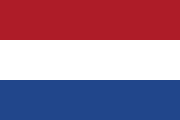 Arnhem, Netherlands, since June 1999
Arnhem, Netherlands, since June 1999 Bordeaux, France, since June 18, 1998
Bordeaux, France, since June 18, 1998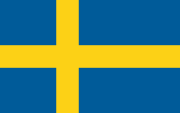 Borlänge, Sweden, since September 2007
Borlänge, Sweden, since September 2007 Cheongju, Republic of Korea, since October 29, 2000
Cheongju, Republic of Korea, since October 29, 2000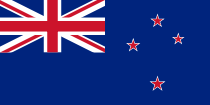 Christchurch, New Zealand, since April 4, 2006
Christchurch, New Zealand, since April 4, 2006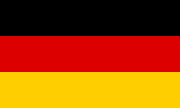 Duisburg, Germany, since October 8, 1982
Duisburg, Germany, since October 8, 1982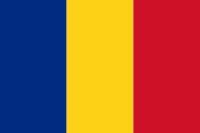 Galaţi, Romania, since August 12, 1987
Galaţi, Romania, since August 12, 1987 Győr, Hungary, since October 19, 1995
Győr, Hungary, since October 19, 1995 Khartoum, Sudan, since September 27, 1995
Khartoum, Sudan, since September 27, 1995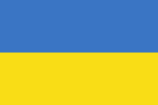 Kiev, Ukraine, since October 19, 1990
Kiev, Ukraine, since October 19, 1990 Manchester, United Kingdom, since September 16, 1986
Manchester, United Kingdom, since September 16, 1986 Markham, Canada, since September 12, 2006
Markham, Canada, since September 12, 2006 Ōita, Japan, since September 7, 1979
Ōita, Japan, since September 7, 1979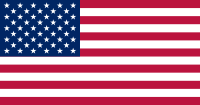 Pittsburgh, United States of America, since September 8, 1982
Pittsburgh, United States of America, since September 8, 1982 Porsgrunn, Norway, since June 2004
Porsgrunn, Norway, since June 2004 Sankt Pölten, Austria, since December 20, 2005
Sankt Pölten, Austria, since December 20, 2005 St. Louis, United States of America, since September 2004
St. Louis, United States of America, since September 2004 Ashdod, Israel, since October 2009
Ashdod, Israel, since October 2009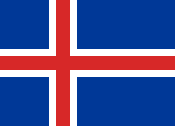 Kópavogur, Iceland, since September 2007
Kópavogur, Iceland, since September 2007
Diplomatic representation
The United States,[19] France,[20] have consulates in Wuhan and South Korea will open a consulate soon.[21] The U.S. Consul General, the Honorable Ms. Diane L. Sovereign, has been stationed in Wuhan since 30 November 2009. The office of the U.S. Consulate General, Central China (located in Wuhan) celebrated its official opening on 20 November 2008 and is the first new American consulate in China in over 20 years.[22][23]
Image gallery
 Night lights at a major square in Wuchang district |
 An area of Wuhan during a construction boom |
 |
 View from the base of Turtle Hill with the Yellow Crane tower seen in the distance |
 |
 |
 |
 |
 |
 |
See also
- List of tallest buildings in Wuhan
- 1954 Yangtze River Floods
- List of cities in the People's Republic of China by population
- List of current and former capitals of subnational entities of China
References
Bibliography
- Chi, Li (2000). Lao Wuhan (Old Wuhan): Yong Yuan De Lang Man... (part of the "Lao Cheng Shi" series). Nanjing: Jiangsu Meishu Chubanshe.
- Coe, John L. (1962). Huachung University (Huazhong Daxue). New York: United Board for Christian Higher Education.
- Danielson, Eric N. (2005). "The Three Wuhan Cities," pp.1-96 in The Three Gorges and the Upper Yangzi. Singapore: Marshall Cavendish/Times Editions.
- Latimer, James V. (1934). Wuhan Trips: A Book on Short Trips in and Around Hankow. Hankow: Navy YMCA.
- MacKinnon, Stephen R. (2000). "Wuhan's Search for Identity in the Republican Period," in Remaking the Chinese City, 1900-1950, ed. by Joseph W. Esherick. Honolulu: University of Hawaii Press.
- Rowe, William T. (1984). Hankou: Commerce and Society, 1796-1889. Stanford: Stanford University Press.
- Rowe, William T. (1988). Hankou: Conflict and Community in a Chinese City, 1796-1895. Stanford: Stanford University Press.
- Song, Xiaodan and Zhu, Li (1999). Wuhan Jiu Ying (Old Photos of Wuhan). Beijing: Renmin Meishu Chubanshe (People's Fine Arts Publishing House).
Notes
- ↑ 1.0 1.1 1.2 1.3 Almanac of Wuhan 2009, ranking 11th in mainland China: Wuhan Bureau of Statistics, Chapter 1 Section 9 http://www.whtj.gov.cn/documents/tjnj2009/1/1-9.htm
- ↑ 2.0 2.1 "中国地面国际交换站气候标准值月值数据集(1971-2000年)" (in Simplified Chinese). China Meteorological Administration. http://cdc.cma.gov.cn/shuju/search1.jsp?dsid=SURF_CLI_CHN_MUL_MMON_19712000_CES&tpcat=SURF&type=table&pageid=3. Retrieved 2009-03-17.
- ↑ Wunderground Archives (2008-01-09). "Temperatures in Wuhan". Wunderground. http://www.wunderground.com/cgi-bin/findweather/getForecast?query=wuhan. Retrieved 2008-01-09.
- ↑ Tianxingzhou highway-railway Bridge in Wuhan opens to traffic. english.cnhubei.com 2009-12-28
- ↑ Two high-speed rail links start April 1
- ↑ [Source: Beijing (AFP, Sat Dec 26, 7:54 am ET]
- ↑ 7.0 7.1 "> Asia > China > Wuhan Metro". UrbanRail.Net. http://urbanrail.net/as/wuha/wuhan.htm. Retrieved 2010-04-21.
- ↑ "武汉建设网-国内最长轻轨今晨贯通 力争7月28日通车". Zdgc.whjs.gov.cn. http://zdgc.whjs.gov.cn/content/2010-04/21/content_186692.htm. Retrieved 2010-04-21.
- ↑ With monthly disposable income:1392.7 CNY. Almanac of Wuhan 2009: Wuhan Bureau of Statistics, Chapter 1 Section 8 http://www.whtj.gov.cn/documents/tjnj2009/1/1-8.htm.
- ↑ People's Daily Online (2005-10-25). "Wuhan absorbs most French investment in China". People's Daily. http://english.people.com.cn/200510/25/eng20051025_216752.html. Retrieved 2006-10-23.
- ↑ 大汉网络 (2004-09-03). "The Thoroughfare to Nine Provinces-Wuhan City". Cnhubei.com. http://www.cnhubei.com/200502/ca677743.htm. Retrieved 2010-02-04.
- ↑ RightSite.asia | Wuhan East Lake High-Tech Development Zone
- ↑ RightSite.asia | Wuhan Economic and Technological Development Zone
- ↑ RightSite.asia | Wuhan Export Processing Zone
- ↑ RightSite.asia | Wuhan Optical Valley (Guanggu) Software Park
- ↑ "National Colleges and Universities" (in Simplified Chinese). Hubei Provincial Department of Education. 2006-08-31. http://www.hbe.gov.cn/e21web/jyt/hbgx_list.php?college_kinds=1.
- ↑ "Public Colleges and Universities" (in Simplified Chinese). Hubei Provincial Department of Education. 2006-08-31. http://www.hbe.gov.cn/e21web/jyt/hbgx_list.php?college_kinds=2.
- ↑ "#2 Wu Yi Vice Premier, minister of health". 2005-11. http://www.forbes.com/lists/2005/11/GGD7.html.
- ↑ US Department of State (2008-11-23). "Consulate General of the United States Wuhan, China". http://wuhan.usembassy-china.org.cn/index.html.
- ↑ French Foreign Ministry (2008-11-23). "Consulat General de France a Wuhan". http://www.ambafrance-cn.org/spip.php?rubrique718&lang=fr&ville=wuhan.
- ↑ Xinhua News Agency (2009-01-21). "ROK to open consulate in central China city". http://news.xinhuanet.com/english/2008-12/08/content_10474032.htm.
- ↑ "U.S. Opens Consulate in China Industry Center Wuhan". Associated Press. 20 November 2008. http://www.google.com/hostednews/ap/article/ALeqM5i9eETZIZiun01Oj6prVkAdZwW8DAD94IJQ180.
- ↑ US Department of State (20 November 2008). "The United States Consulate General in Wuhan, China Opens on November 20, 2008". http://wuhan.usembassy-china.org.cn/112008p_wuhan.html.
External links
- Wuhan Government website (Chinese)
- Wuhan travel guide from Wikitravel
| Preceded by Nanjing |
(wartime) Capital of China 1937 |
Succeeded by Chongqing (wartime) |
|
|||||||||||||||
|
||||||||||||||||||||||
|
|||||
|
|||||||



